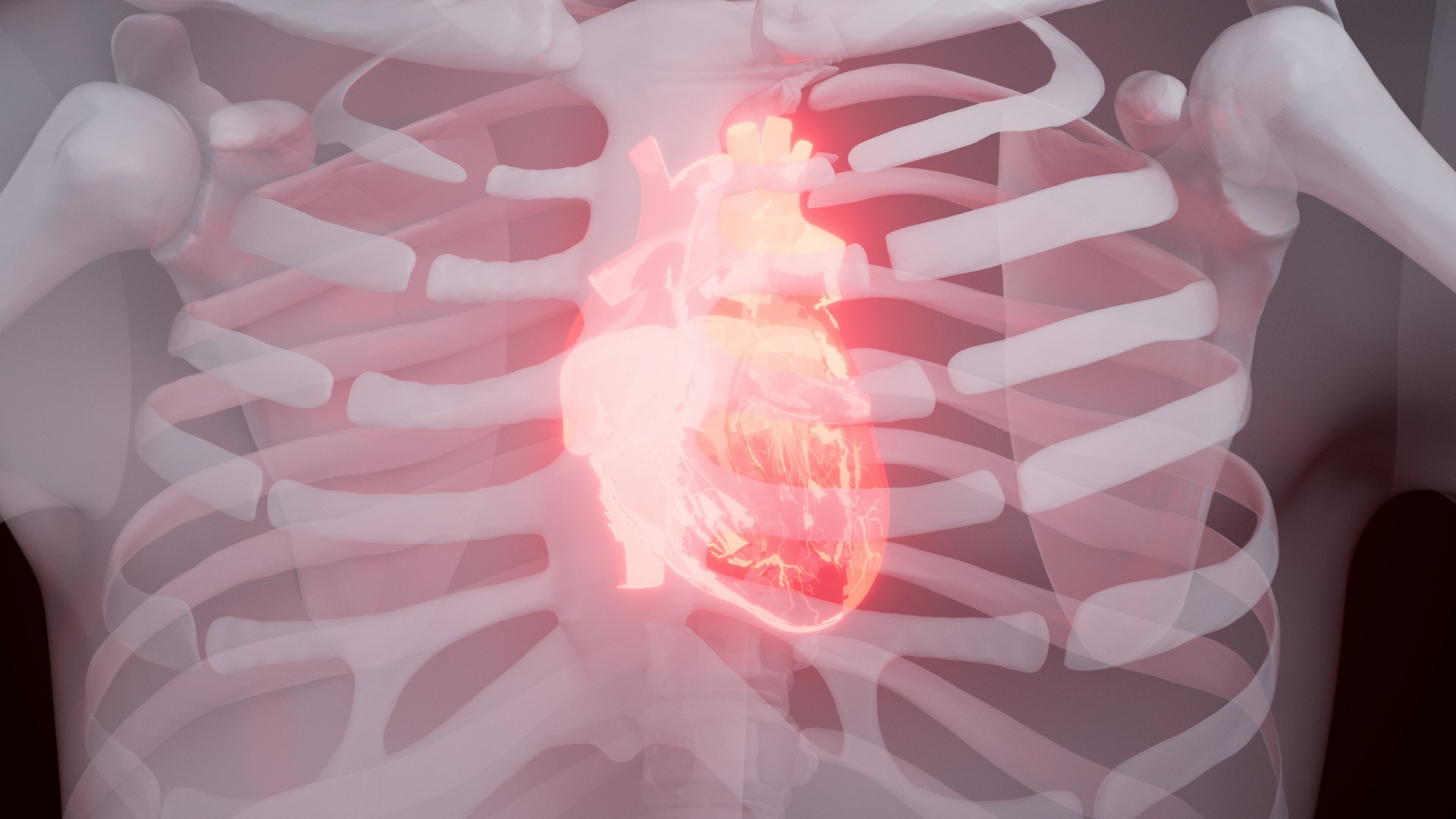Health
Balancing Act: Managing Multiple Medications

Ah, the joys of aging. One day, you’re dancing the night away in your favorite pair of bell-bottoms, and the next, you’re juggling a daily cocktail of pills that would make a pharmacist blush. While managing multiple medications can feel like a high-wire act, it doesn’t have to be a circus. Here’s how to balance your health needs without losing your marbles – or your sense of humor.
Organization
First, let’s talk about organization. Remember when we used to organize our record collections? Well, now we’re organizing pills. A pillbox with compartments for each day of the week can be a lifesaver. If you’re feeling particularly crafty, why not decorate it? A little glitter never hurt anyone, and it might just make you smile when it’s time to take your daily dose.
Pharmacy
Next, make friends with your pharmacist. No, I’m not suggesting you invite them over for a game of bridge, but don’t be shy about asking questions. Pharmacists are a wealth of knowledge and can help you understand your medications, possible side effects, and any potential interactions. Plus, they might have some handy tips for remembering to take your meds.
Diet
Now, let’s talk about diet. Remember when we used to worry about fitting into our skinny jeans? Well, these days, it’s more about ensuring our food plays nice with our pills. Some medications can be affected by what you eat or drink, so it’s essential to know the do’s and don’ts. For instance, grapefruit and certain medications don’t mix – who knew?
Exercise
Exercise is another key player in the balancing act. We’re not talking about training for a marathon here, just a little movement to keep the blood pumping and the joints flexible. Walking, swimming, gentle yoga – all these can help boost your mood, improve your health, and even help your medications work better. Just remember to check with your doctor before starting any new exercise routine.
Healthcare providers
And speaking of doctors, don’t forget to keep them in the loop. If you’re seeing multiple healthcare providers (and let’s face it, who isn’t these days?), make sure they all know what medications you’re taking. This includes over-the-counter drugs, supplements, and any other medication you’re taking.
Remember to give yourself a break. Managing multiple medications can be a bit of a juggling act, but it’s okay to drop a ball now and then. If you forget a dose, don’t panic. Just take it as soon as you remember, or if it’s close to your next dose, skip the missed one. Doubling up can lead to more harm than good.
So there you have it, my friends. A few simple steps to help you navigate the medication maze. It may not be as fun as grooving to the Beatles on a Saturday night, but with a little organization, a dash of knowledge, and a healthy dose of humor, we can handle this balancing act with grace and style. After all, we’re not just aging – we’re aging fabulously.

Health
Discover the Health Benefits and Risks of Sauna Use

Taking time to sit in a sauna can be a wonderful way to unwind after a tough workout or a stressful day. Whether you’re reading a book, listening to a podcast, or simply closing your eyes and taking deep breaths, the sauna experience can be incredibly relaxing. However, while saunas offer numerous health benefits, it’s important to be aware of the potential risks associated with overuse.
Understanding Different Types of Saunas
Saunas come in various forms, each with its unique characteristics. According to the North American Sauna Society, a sauna is “a specific room heated to about 150 to 195 (F) degrees, and where the temperature and humidity of the room can be controlled with sprinkling water on the rocks in the heater/stove.” Common types include wood-burning saunas, electrically heated saunas, manufactured sauna rooms, smoke saunas, steam rooms, and infrared rooms. Despite the variety, many health benefits are consistent across all types.
Health Benefits of Saunas
The use of saunas can contribute to better respiratory health, cardiovascular function, and even cognitive health. Dr. Brooke Jeffy, a board-certified dermatologist, highlights that “Both steam and dry saunas can have beneficial effects on respiratory conditions, cardiovascular disease and dementia.” Additionally, they help alleviate stiff muscles and joints, enhance circulation to the skin, and positively impact blood pressure. Infrared saunas, in particular, may aid in weight loss and muscle recovery when combined with exercise.
Optimal Timing for Sauna Use
The timing of your sauna session can vary based on personal preference and lifestyle. Dr. Jeffy notes that the time of day doesn’t significantly affect the health benefits. “Either a morning sweat or a relaxing sit in the sauna before bed can boast health benefits,” she says. Many individuals prefer to use the sauna post-workout for added relaxation and muscle recovery.
Monitoring Sauna Duration
It’s crucial to keep track of how long you spend in the sauna to avoid potential risks. Many gym saunas are equipped with clocks, but if not, it’s advisable to bring a timer or set an alarm. Dr. Jeffy advises, “The maximum time to spend in the dry sauna or steam room is about 15-20 minutes. Infrared sauna can be used longer, anywhere from 20-40 minutes.”
Potential Risks of Sauna Overuse
While saunas have numerous benefits, they also come with risks such as dehydration, heat exhaustion, and heat stroke. To mitigate these risks, make sure to stay hydrated by bringing a bottle of water into the sauna. If you’re new to sauna use, start with shorter sessions to allow your body to adjust gradually.
Who Should Avoid Saunas
Certain individuals should avoid saunas altogether. Dr. Jeffy warns that saunas should not be used if you are pregnant, sick, intoxicated, or prone to dizziness. Additionally, “Saunas should not be used if you have had a recent heart attack, or history of angina, aortic stenosis or congestive heart failure.”
Taking the time to enjoy a sauna can be a delightful addition to your wellness routine, offering numerous health benefits from improved cardiovascular health to better muscle recovery. However, being mindful of the potential risks and taking necessary precautions ensures that your sauna experience remains safe and enjoyable.
Let us know what you think, please share your thoughts in the comments below.
Health
Blood Test May Predict Women’s Heart Disease Risk Decades Ahead

Recent research suggests that a single blood test could predict a woman’s risk of heart disease up to 30 years in advance.
Published in The New England Journal of Medicine and presented at the European Society of Cardiology (ESC) Congress, the study offers promising insights into long-term heart health prediction.
The study involved nearly 30,000 women, with an average age of 55, who underwent a blood test in 1993.
This test measured two types of fat in the bloodstream and a specific protein, and the participants’ health was monitored over a 30-year period.
Dr. Paul Ridker, the lead study author and director of the Center for Cardiovascular Disease Prevention at Brigham and Women’s Hospital in Boston, stated:
“The strongest predictor of risk was a simple blood measure of inflammation known as high sensitivity C-reactive protein, or hsCRP, followed by cholesterol and lipoprotein(a).”
He emphasized the significance of these findings, noting:
“Knowing all three predicted risks not just at five or 10 years, but at 20 and 30 years, gives us a road map for how to target specific therapies for the individual patient, rather than an overly simple ‘one-size-fits-all’ approach.”
C-reactive protein (CRP), produced by the liver, increases with inflammation and indicates a higher risk of heart disease.
LDL cholesterol, often referred to as “bad” cholesterol, can accumulate in the arteries, elevating the risk of heart attack or stroke.
Additionally, lipoprotein(a), or Lp(a), is a type of LDL cholesterol that also contributes to plaque buildup in arteries.
Dr. Ridker highlighted:
“This is a large, convincing study that puts together three predictive blood tests that haven’t been looked at in this way before.”
The study found that women with the highest levels of LDL cholesterol had a 36% increased risk of heart disease compared to those with the lowest levels.
Those with the highest levels of Lp(a) had a 33% greater risk.
Women with the highest levels of CRP faced a 70% increased risk.
Moreover, women with elevated levels of all three measures were 1½ times more likely to experience a stroke and over three times as likely to develop coronary heart disease.
Despite the importance of these measures, Dr. Ridker pointed out:
“While most doctors measure cholesterol, very few measure hsCRP and Lp(a).”
He added:
“It is a truism of medicine that doctors will not treat what they do not measure.”
The ability of a single blood test to predict risk 30 years later is described by Ridker as “astonishing.”
He remarked:
“It tells us how much silent risk we simply are unaware of, and gives us an opportunity to start preventive efforts far earlier in life.”
Dr. Marc Siegel, a senior medical analyst for Fox News and clinical professor of medicine at NYU Langone Medical Center, praised the study, stating it is a “big step forward” in using blood tests to determine a woman’s cardiac risk.
Siegel noted:
“This is a large, convincing study that puts together three predictive blood tests that haven’t been looked at in this way before.”
He further explained:
“Since inflammation can cause heart attacks, it is confirmatory that an elevated inflammation marker (CRP) conveys a 70% increased risk for heart disease.”
Siegel also mentioned that LDL and Lp(a) have been previously linked to an increased risk of heart disease.
Looking ahead, Siegel envisions that blood markers like these will be combined with artificial intelligence to assess heart disease and stroke risk.
Based on the study’s findings, Ridker advises patients to ask their doctors to measure hsCRP and Lp(a).
“The time has come for our guidelines to change,” he asserted.
Ridker observed that women often seem less concerned about heart disease than men.
He explained:
“Unfortunately, our traditional screening guidelines rarely identify at-risk women until they are in their late 60s or 70s. Yet prevention must start in our 30s and 40s for it to be most effective.”
Preventive measures should initially focus on a heart-healthy diet, regular exercise, smoking cessation, and stress management.
However, some patients may require drug therapies to reduce inflammation and lower cholesterol levels.
The researchers acknowledged that the study’s main limitation was its focus on health professionals.
Ridker noted:
“Yet in other settings, we know this is also true for men — and, if anything, an even greater concern for minority individuals.”
The research received funding from the National Institutes of Health (NIH), the National Heart, Lung, and Blood Institute (NHLBI), and the National Cancer Institute (NCI).
Let us know what you think, please share your thoughts in the comments below.
Health
Sepsis: The Silent Threat Rivalling Heart Disease and Cancer in the US

Vicki Gunvalson, a 62-year-old star from “Real Housewives of Orange County,” recently faced a life-threatening health scare when she was hospitalized with sepsis. Sepsis, a critical condition arising from the body’s response to an infection, can be deadly if not promptly addressed.
“This entire health scare came unannounced — with no warning,” Gunvalson shared with Fox News Digital. Her experience is especially timely as September marks Sepsis Awareness Month, shedding light on this often-overlooked condition.
“Sepsis awareness can and does save lives, yet only 65% of American adults have ever heard of it,” said Selena A. Gilles, a clinical professor and associate dean at New York University Rory Meyers College of Nursing. Gilles is also on the advisory board of the Sepsis Alliance, an organization dedicated to reducing the suffering caused by sepsis.
Dr. Aaron Glatt, chief of infectious diseases at Mount Sinai South Nassau Hospital in Long Island, New York, emphasized the importance of early detection.
“Prompt recognition and treatment can be of great importance in preventing significant illness and even mortality,” he stated.
Gunvalson recounted her alarming symptoms: “Two weeks ago, when I was heading to my office, I was very delirious and unclear on where I was going.” Her staff initially suspected a stroke due to her abnormal behavior. After an initial misdiagnosis of “sinus disease” and being sent home, her condition worsened, leading her boyfriend to rush her back to the hospital the next day.
“I was admitted for six days with sepsis and pneumonia,” Gunvalson revealed. She was treated with antibiotics and is now recovering, though she still experiences some memory loss and concentration difficulties.
Reflecting on her ordeal, Gunvalson speculated that her sepsis might have originated from a sinus infection treated with multiple rounds of antibiotics two months prior. Common symptoms of sepsis include fever, chills, rapid heart rate, confusion, shortness of breath, extreme pain, and clammy or sweaty skin, according to Gilles.
“A high fever – especially in those who are at increased risk of infection and are feeling extremely unwell – should warrant seeking medical attention as soon as possible,” Glatt advised.
Dr. Marc Siegel, Fox News’ senior medical analyst, added, “Fatigue and lethargy in the setting of infection can be a sign of pneumonia and potential sepsis, even without overt pulmonary symptoms.”
Given the rapid onset of sepsis, Gilles suggested using the acronym “TIME” to remember that timely intervention is crucial:
– T – Temperature (high or low)
– I – Infection (know the signs and symptoms)
– M – Mental decline (confusion, sleepiness)
– E – Extremely ill (severe pain or discomfort)
Approximately 1.7 million adults in the U.S. are diagnosed with sepsis annually, with 350,000 deaths each year, making it the third-leading cause of death in U.S. hospitals, according to the CDC. “Sepsis takes a life every 90 seconds — that’s more lives than opioids, breast cancer, prostate cancer and stroke combined,” Gilles noted.
A common misconception is that sepsis is simply an infection. “Sepsis is the body’s overwhelming and life-threatening response to infection, which can lead to tissue damage, organ failure and death,” Gilles explained. It can result from any infection, whether a minor cut, dental procedure, or surgery, triggering a dangerous chain reaction in the body.
Most cases of sepsis, around 87%, begin before a patient enters the hospital, Gilles pointed out. “Community-acquired infections, such as urinary tract infections, pneumonia and even simple cuts or scrapes can lead to sepsis if not treated properly,” she added.
While sepsis can affect anyone, those at higher risk include older adults, infants, and individuals with chronic illnesses or weakened immune systems. The first step in treatment is identifying the underlying cause of the infection, which often originates in the gastrointestinal tract, lungs, skin, or urinary tract.
“While antibiotics are crucial for treating an underlying bacterial infection, managing sepsis often requires a comprehensive approach — including fluids, medications to support blood pressure, and sometimes surgery or [a ventilator], depending on the severity,” Gilles said. Surgery may be necessary to remove tissue damaged by the infection, and maintaining blood flow to the organs is vital.
“If you suspect sepsis, seek medical attention right away,” Gilles advised. Reducing the risk involves quickly identifying and managing infections, practicing good hygiene, staying current with vaccinations, maintaining good health, keeping cuts clean and dry, and promptly seeking treatment when infections are suspected.
Let us know what you think, please share your thoughts in the comments below.
-

 Health4 months ago
Health4 months ago17-Second Neuropathy Solution
-

 Health11 months ago
Health11 months agoPreventing Falls and Injuries for Seniors
-

 Nutrition8 months ago
Nutrition8 months agoThe Aging Secret of Vitamin D Unveiled
-

 Health3 months ago
Health3 months agoOncologist Reveals Top 5 Cancer Prevention Tips You Shouldn’t Ignore
-

 Nutrition12 months ago
Nutrition12 months ago5 AMAZING Dinner Recipes That Are Also HEALTHY
-

 Lifestyle4 months ago
Lifestyle4 months agoSleep Soundly with These 11 Expert-Approved Bedtime Routines
-

 Health9 months ago
Health9 months agoDownsizing Tips: Simplifying Your Lifestyle
-

 Health6 months ago
Health6 months agoBoost Your Heart Health: Simple Tips for Seniors